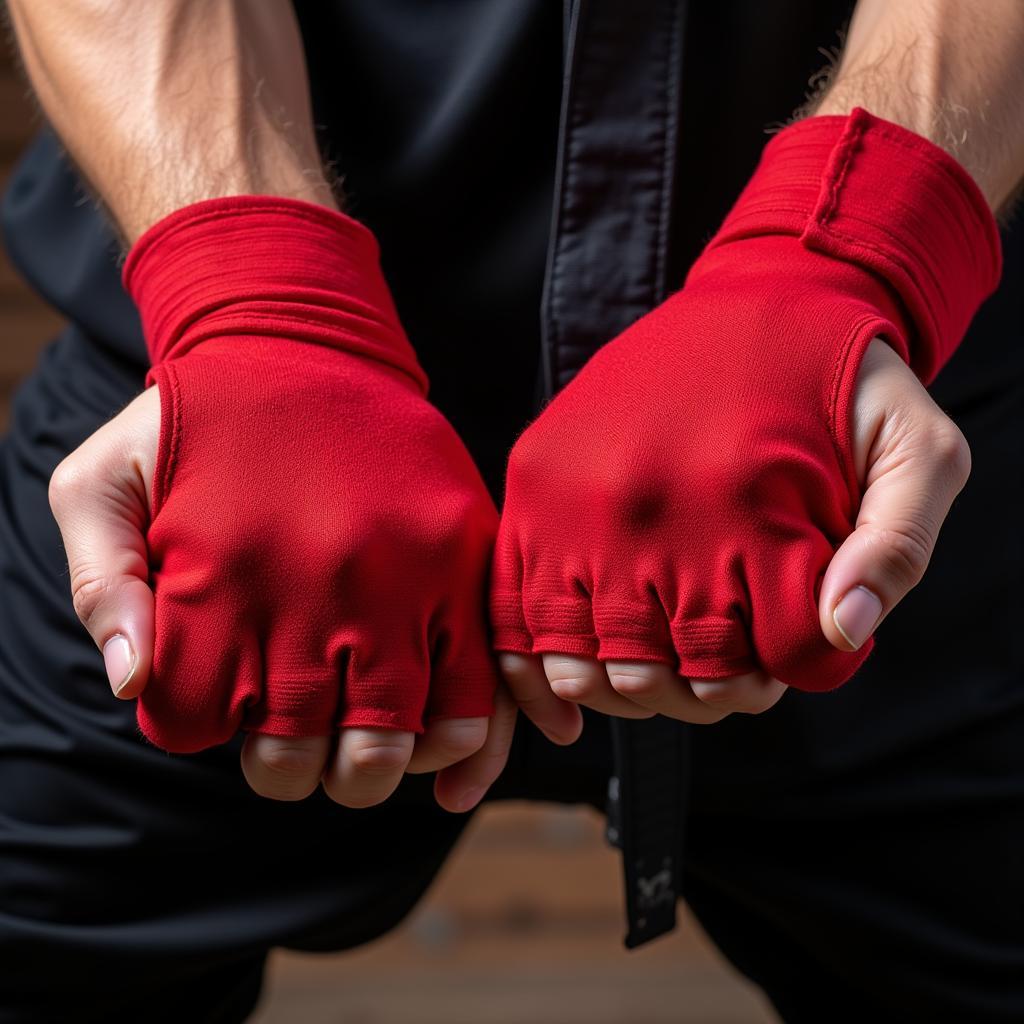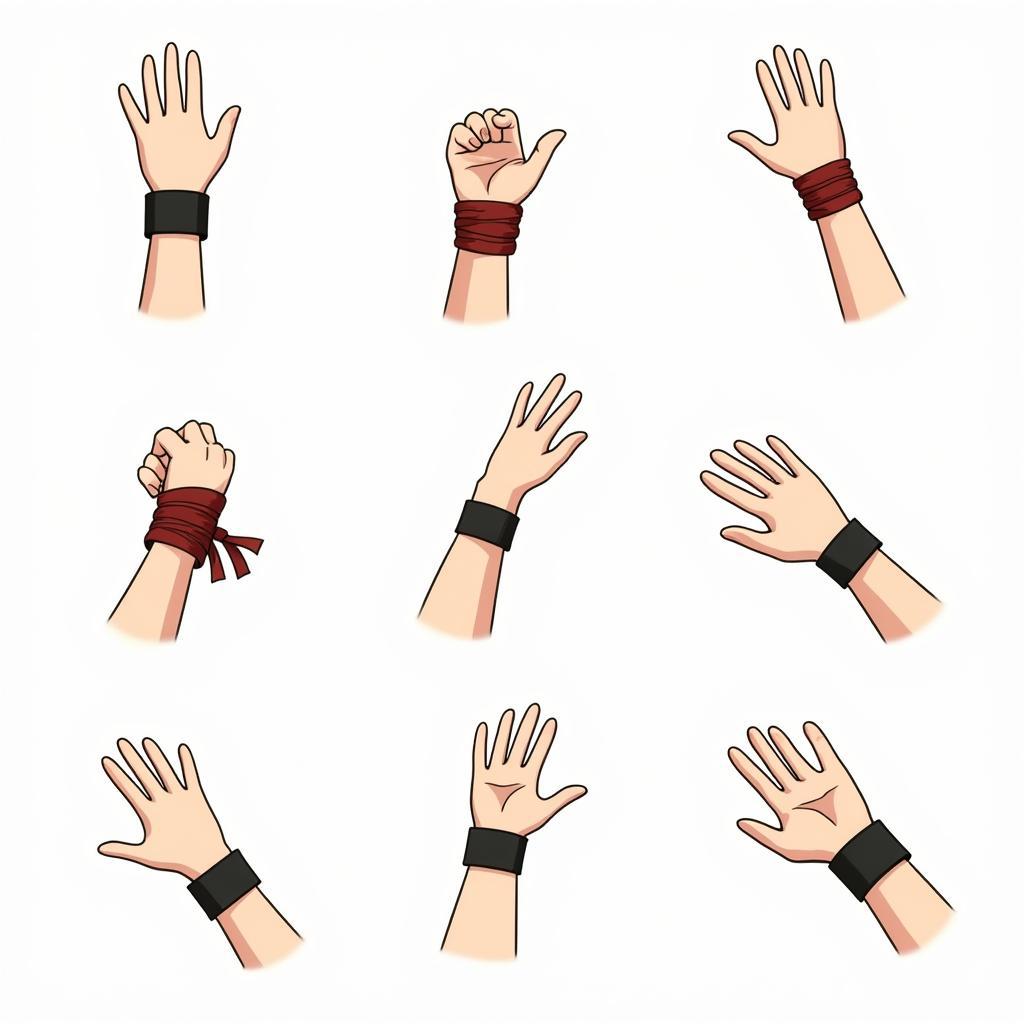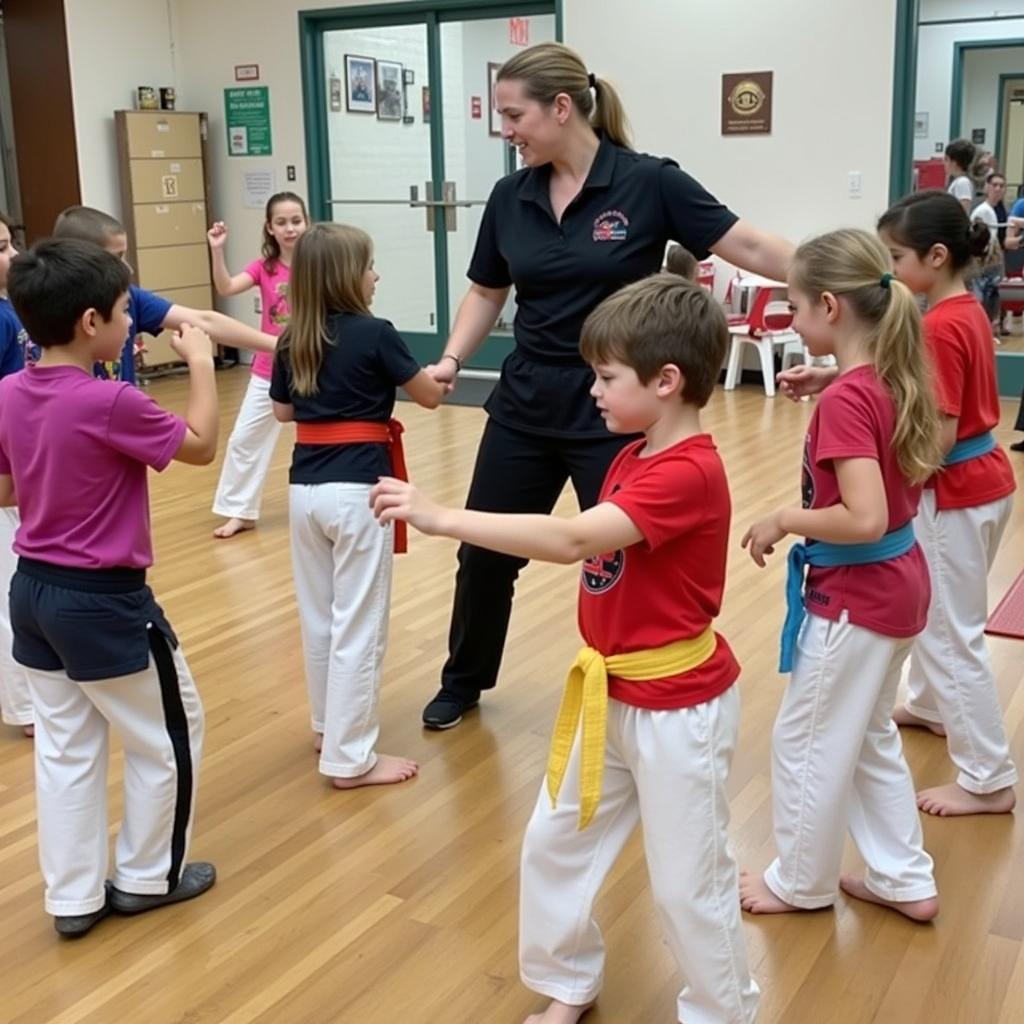Master Your Strikes: The Ultimate Guide to Martial Arts Hand Wraps
Martial Arts Hand Wraps are an essential piece of equipment for any practitioner, from beginners to seasoned professionals. They provide crucial support and protection for your wrists and hands, allowing you to train harder and for longer periods without risking injury. Whether you’re practicing boxing, Muay Thai, karate, or any other striking art, understanding the importance and proper usage of hand wraps is paramount for your safety and success in martial arts.
Why Are Martial Arts Hand Wraps So Important?
 The Importance of Hand Wraps in Martial Arts
The Importance of Hand Wraps in Martial Arts
Imagine throwing a powerful punch without any hand protection. The small bones in your hand, along with the delicate ligaments and tendons, are vulnerable to impact, especially during repeated strikes. Hand wraps act as a supportive exoskeleton, stabilizing your wrist joint, aligning your hand bones, and compressing your knuckles, thus reducing the risk of sprains, fractures, and other hand injuries.
Furthermore, using martial arts hand wraps can:
- Improve your punching power: A stable wrist transmits force more efficiently, resulting in stronger punches.
- Extend your training sessions: By minimizing the strain on your hands, you can train longer and harder, ultimately improving your skills.
- Reduce post-training soreness: The compression provided by hand wraps helps to minimize swelling and inflammation, leading to faster recovery.
Choosing the Right Hand Wraps: A Guide for Beginners
 Types of Martial Arts Hand Wraps
Types of Martial Arts Hand Wraps
Navigating the world of martial arts hand wraps can be overwhelming for newcomers, especially with the diverse range of materials, lengths, and closure types available. Here’s a breakdown to simplify your decision:
Material Matters: Cotton vs. Mexican Style vs. Elastic
- Cotton: The most common and affordable type, cotton hand wraps offer excellent breathability and comfort, making them ideal for beginners. They are easily washable and provide a good balance between support and flexibility.
- Mexican Style: Made from semi-elastic cotton, these wraps are known for their durability and secure fit. They offer a slightly tighter compression compared to standard cotton wraps, making them popular among experienced practitioners.
- Elastic: As the name suggests, these wraps provide the highest level of compression due to their elastic properties. While they offer excellent support, beginners might find them restrictive, and they might not be suitable for prolonged use.
Length: Finding the Perfect Fit
Hand wrap length is measured in inches and typically ranges from 100 inches to 200 inches. The ideal length depends on your hand size and the level of support desired. Longer wraps provide more coverage and support, while shorter ones are easier to wrap and offer greater flexibility. As a general guideline:
- 100-120 inches: Suitable for small hands or beginners who prefer a less bulky feel.
- 150-180 inches: The most versatile option, offering a good balance between support and ease of use.
- 180-200 inches: Ideal for larger hands or those seeking maximum wrist and knuckle protection.
Closure System: Velcro vs. Tie-Up
- Velcro: The most convenient closure system, velcro allows for quick and easy application and removal. It’s an excellent choice for beginners or those who value convenience.
- Tie-Up: Offering a more secure and customizable fit, tie-up wraps are favored by experienced practitioners. However, they require a bit more time and practice to master the wrapping technique.
Mastering the Art of Wrapping: Step-by-Step Guide
 How to Wrap Hands for Martial Arts
How to Wrap Hands for Martial Arts
Proper wrapping technique is just as important as choosing the right hand wraps. A poorly wrapped hand is just as vulnerable as an unwrapped one. Follow these steps to ensure a secure and supportive fit:
- Start with a clean and dry hand.
- Thread the loop through your thumb and wrap it around your wrist. Ensure the loop is on the inside of your wrist to avoid any discomfort.
- Wrap around your wrist 2-3 times. This provides crucial wrist support, especially during impact.
- Bring the wrap diagonally across the back of your hand and under your thumb. This step helps to secure your thumb and prevent it from hyperextending.
- Wrap around your hand, covering your knuckles 3-4 times. Ensure the wraps are snug but not too tight, allowing for proper blood circulation.
- Make an “X” shape over the back of your hand. This reinforces the support for your knuckles and metacarpals.
- Wrap around your thumb. This provides additional support for your thumb joint.
- Finish by securing the wrap with the velcro closure or by tying it off. Make sure the closure is secure and won’t come undone during training.
Caring for Your Hand Wraps: Extending Their Lifespan
Like any piece of training equipment, hand wraps require proper care to maintain their effectiveness and hygiene. After each use, unwrap your hand wraps fully and hang them to dry, preventing the build-up of bacteria and unpleasant odors. Wash your hand wraps regularly, following the manufacturer’s instructions. Inspect your hand wraps frequently for signs of wear and tear, such as fraying or holes. Replace them when necessary to ensure optimal protection and support.
By investing in high-quality martial arts hand wraps and mastering the art of wrapping, you are taking a proactive step towards safeguarding your hands, enhancing your performance, and enjoying a long and rewarding martial arts journey. If you’re looking for premier martial arts stores or martial arts supply near me, look no further than our extensive collection of high-quality equipment designed to elevate your training experience.
Frequently Asked Questions about Martial Arts Hand Wraps
1. Can I reuse martial arts hand wraps?
Yes, you can reuse hand wraps, but it’s crucial to wash them regularly to maintain hygiene and prevent bacterial growth.
2. How tight should my hand wraps be?
Hand wraps should be snug but not too tight. They should provide support without restricting blood flow. If your hands feel numb or tingly, loosen the wraps slightly.
3. How often should I replace my hand wraps?
The lifespan of hand wraps depends on the frequency and intensity of your training. As a general rule, replace them every 3-6 months or sooner if you notice any signs of wear and tear, such as fraying, holes, or decreased elasticity.
4. Can I use boxing hand wraps for other martial arts?
Yes, boxing hand wraps can be used for other striking-based martial arts like Muay Thai, kickboxing, and karate.
5. What are the best hand wraps for beginners?
Beginners are often recommended to start with 180-inch cotton hand wraps with velcro closures for their ease of use and comfortable fit.
6. What are the benefits of using hand wraps with gloves?
Wearing hand wraps beneath your gloves provides an extra layer of protection and support, reducing the risk of hand injuries. They also help to absorb sweat and keep your gloves fresher for longer.
7. Can I train without hand wraps?
While it’s technically possible to train without hand wraps, it’s highly discouraged, especially for beginners. Hand wraps provide essential support and protection for your hands and wrists, reducing the risk of injuries and allowing you to train harder and more effectively.
Need further assistance or have more questions? Our dedicated customer support team is available 24/7 to assist you. Contact us at Phone Number: 02462573573, Email: danteum@gmail.com or visit us at our store located at Savico Megamall, 7-9 Đ. Nguyễn Văn Linh, Gia Thụy, Long Biên, Hà Nội 10000, Việt Nam.



